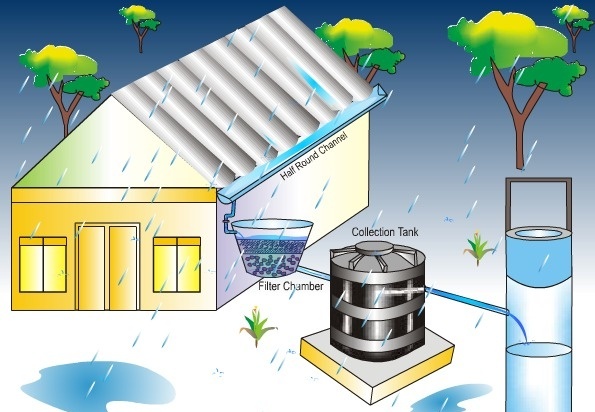Though water is a renewable resource, most of it is extremely saline for human consumption. And because much of the earth’s freshwater is inaccessible or distributed unevenly, many places around the world do not have access to clean drinking water. Moreover, some of these places also experience water scarcity – which can lead to repercussions that have the potential to cripple economies. A notable solution to this problem is rainwater harvesting.
What Is Meant By Rainwater Harvesting?
Rainwater harvesting is a type of harvest where raindrops are collected and stored for future use. Usually, rainwater is harvested off roofs or rivers and is redirected to various storage structures ranging from a simple water barrel to an aquifer, or a well. Once collected, it is stored and used for various purposes ranging from agriculture to groundwater recharge. Now that we know what is rainwater harvesting, let us explore its history.
History Of Rainwater Harvesting
The concept of rainwater harvesting is not new, it can be traced back to the Neolithic Age, nearly 12,000 years ago. Back then, cisterns made of waterproof lime plaster were built into the floors of houses. By 4000 BC, water cisterns were integral for farming, especially for dry-land farming. In India, the earliest records of rainwater harvesting can be traced back to the Chola Dynasty, with the most notable one being the Vīrānam tank. It was built between 1011 to 1037 in Tamil Nadu and was primarily used for irrigation and drinking purposes. Rainwater harvesting was also common in the Roman Empire. The Roman aqueducts were renowned the world over. Less well known was the Roman Cisterns, many of which supplied fresh water to local households and agricultural lands. Today, rainwater harvesting has found many novel applications besides human consumption.
Applications of Rain Water Harvesting
Besides traditional applications, rainwater harvesting has provided innovative solutions to many problems:
Cooling Towers
Cooling towers are used in large commercial buildings to dissipate heat. Traditionally, cooling towers use large amounts of municipal water, which may not be very economical nor eco friendly. However, using rain harvesting is more feasible, as it is naturally soft free from most salts, it does not require additional chemical treatments
Stormwater Management
Climate change has led to increased severity in weather conditions, especially storms. Rainwater harvesting can reduce the burden on sewer systems, which are caused by excessive stormwater. It can also prevent stormwater runoff from polluting freshwater bodies.
“Sustainable” Rainbows
In 1992, Michael Jones McKean, an American artist, collected thousands of litres of rainwater for a unique work of art. Using the recycled water, he was able to create and sustain a rainbow in Omaha’s Bernis Center for Contemporary Arts. At the time, it was one of the largest rainwater harvesting sites in America. Though an unusual application of rainwater harvesting, it created awareness about the same.
Explore more intriguing applications of rainwater harvesting by registering at BYJU’S. Alternatively, explore other fascinating topics, such as the cilia, pseudopodia, flagella and other strange appendages of unicellular organisms. Alternatively, subscribe to BYJU’S YouTube channel to explore everything about Science and Maths!

